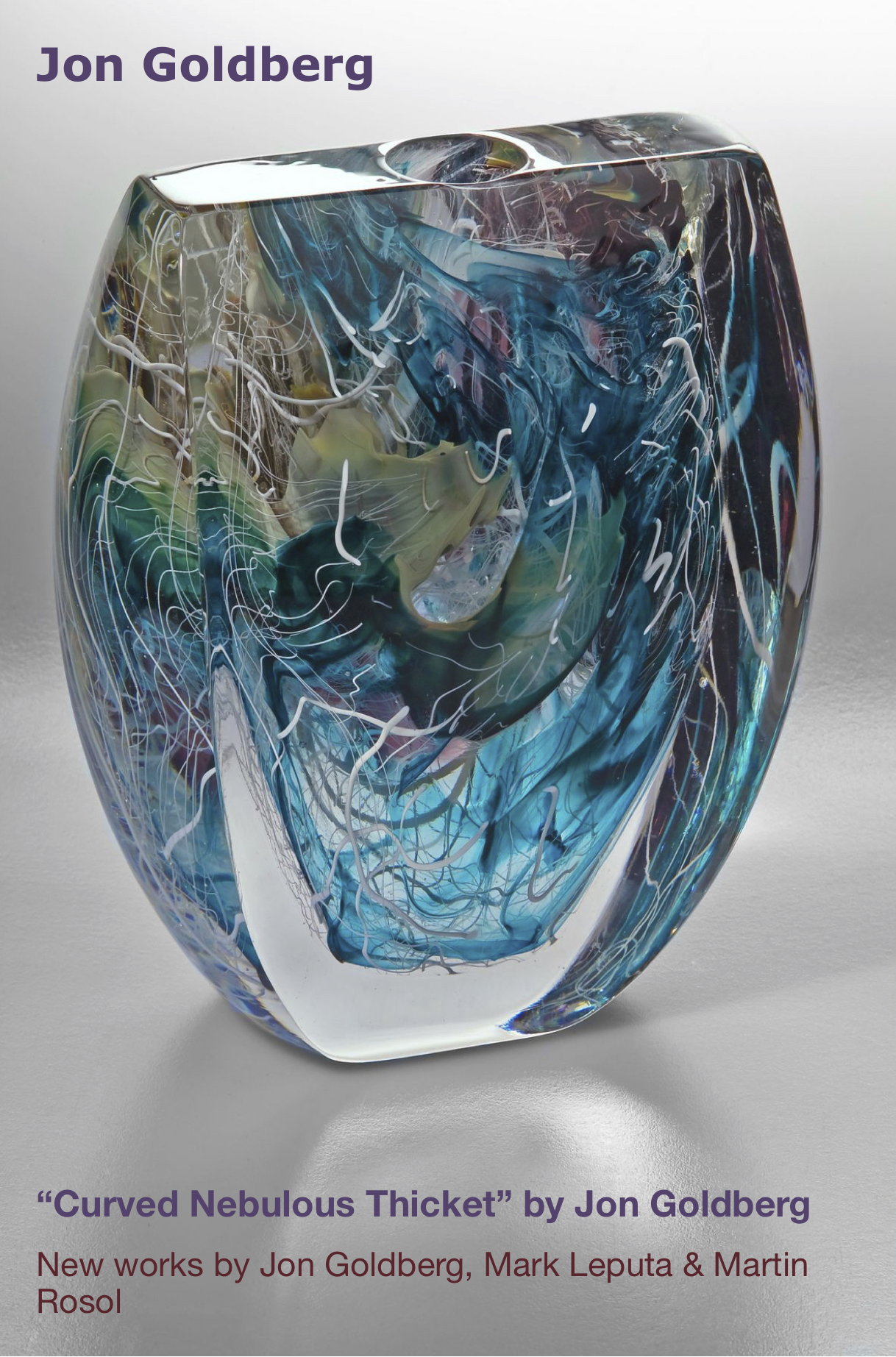Exhibition Dates: Jan 8th – March 10th

Mark Leputa
For Mark Leputa, the greatest sense of self-satisfaction and pride are found in the creative process. Graduating from the University of Pittsburgh in 2003 with a BA in Communications, Mark always felt his imagination was being suppressed.
Not until a short holiday to New Zealand in 2004 did Mark submit to his longing of being a full-time artist. There, he finally discovered the medium he had long been seeking – glass. The heat, the fire, the seemingly liquid state that this material is worked at entranced him. The short holiday turned into a three- year apprenticeship. During this time, he was able to define a body of work where simplicity, purity of form, and negative space is merged to meet harmony.
In 2007, Mark returned to the United States to further his knowledge and skills of the material. He now resides in Alabama where he continues to focus on achieving a clean, crisp, body of work.
Martin Rosol
Martin Rosol came to the United States in 1988 to pursue his career as a sculptor, a path unavailable to him in Czechoslovakia before Vaclav Havel and the Velvet Revolution transformed the country.
Rosol, like many Czech glassworkers, learned his trade in a company school set up to train craftsmen to execute limited edition designs for art glass manufacturers. Though the arrangement provided employment for many, it did not provide young artists with the degree required by the old regime to sell art. So Rosol, who had been designing and making sculptures while working in a glass factory, shipped his work out of the country. Before long, his sculptures were being exhibited in Europe and United States, and in 1981 he was awarded the Bavarian State Prize for Glass Sculpture in Munich. In 1986 he left Czechoslovakia for Austria and two years later came to the United States.
All of Rosol’s sculptures are made with several pieces precisely cut from blocks of crystal and constructed in architectural form after selected surfaces have been sandblasted. The range of translucence and the varied reflective surfaces, the clarity of crystal, and the icy gloss of sand-textured glass all create enclosed spaces within the polished structures. With their architectural forms designed to receive and contain illumination, they are indeed monuments to the light.


Jon Goldberg
Jon Goldberg’s interest in hot glass began in Old City, Philadelphia. He was fascinated by the variety and expressiveness of the glass art on display at a local gallery specializing in Studio Glass. The opportunity became available to take a course in hot glass at a local public-access studio. Jon took his first class in 1999 and was hooked.
As Jon continued to develop his skills, he took classes in many different glassblowing techniques at the Studio at Corning Museum of Glass, ranging from traditional Venetian glassworking to contemporary plasma-neon techniques. He has studied with many great contemporary glass artists, including Josh Simpson, Elio Quarisa, James Nowak, Mark Matthews and William Gudenrath.
Jon’s full-time job as a computer consultant enabled him to follow his muse, bringing East Falls Glassworks, a public-access glass blowing studio in Philadelphia, to reality. Jon continues to consult and operate East Falls Glassworks. He sets aside time for pursuing his glass art and for teaching both introductory and advanced skills to the next generation of glassblowers.
“Working in glass provides a counterbalance to the abstract thought needed for computer consulting. The physical dexterity and skill required for glassblowing are satifying and have no correlation to the world of computers. The problem-solving mindset specific to programming can be applied to creating glass art in series, helping to solve problems and find aesthetic truth as the series evolves.
